- Home
- Chris Ryan
The One That Got Away - Junior edition
The One That Got Away - Junior edition Read online
This eBook is copyright material and must not be copied, reproduced, transferred, distributed, leased, licensed or publicly performed or used in any way except as specifically permitted in writing by the publishers, as allowed under the terms and conditions under which it was purchased or as strictly permitted by applicable copyright law. Any unauthorised distribution or use of this text may be a direct infringement of the author’s and publisher’s rights and those responsible may be liable in law accordingly.
Version 1.0
Epub ISBN 9781409046721
www.randomhouse.co.uk
THE ONE THAT GOT AWAY
A RED FOX BOOK 978 1 849 41346 6
First published in Great Britain by Red Fox,
an imprint of Random House Children’s Books
A Random House Group Company
This edition published 2010
1 3 5 7 9 10 8 6 4 2
Copyright © Chris Ryan, 2010
Adapted for younger readers from The One That Got Away,
first published in the UK in 1995 by Century, an imprint of Cornerstone,
a Random House Group Company.
The right of Chris Ryan to be identified as the author of this work has been asserted in accordance with the Copyright, Designs and Patents Act 1988.
All rights reserved. No part of this publication may be reproduced, stored in a retrieval system, or transmitted in any form or by any means, electronic, mechanical, photocopying, recording or otherwise, without the prior permission of the publishers.
Red Fox Books are published by Random House Children’s Books,
61–63 Uxbridge Road, London W5 5SA
www.kidsatrandomhouse.co.uk
www.rbooks.co.uk
Addresses for companies within The Random House Group Limited can be found at:
www.randomhouse.co.uk/offices.htm
THE RANDOM HOUSE GROUP Limited Reg. No. 954009
A CIP catalogue record for this book is available from the British Library.
For Sarah
CONTENTS
Cover
Title
Copyright
Dedication
Also by the Author
About the Author
Reader Notes
Map
Glossary
1 Stand by . . . Stand by . . . Go!
2 Bravo Two Zero
3 Insertion
4 Contact!
5 Disaster Strikes
6 Down to Two
7 Looking Back
8 Down to One
9 Boxing Clever
10 Echoes of Africa
11 Them or Me
12 Over the Border
13 Safe or Sorry?
14 The Secret Police
15 Friends in High Places
16 Back to Base
17 Counting the Cost
Author Note
Prologue
Part One
Chapter 1
Also available by Chris Ryan, and published by
Random House Children’s Books:
CODE RED
Flash Flood
Wildfire
Outbreak
Vortex
Twister
Battleground
ALPHA FORCE
Survival
Rat-Catcher
Desert Pursuit
Hostage
Red Centre
Hunted
Blood Money
Fault Line
Black Gold
Untouchable
Published by the Random House Group for adult readers:
NON-FICTION
The One That Got Away
Chris Ryan’s SAS Fitness Book
Chris Ryan’s Ultimate Survival Guide
Fight to Win: Deadly Skills of the Elite Forces
FICTION
Stand By, Stand By
Zero Option
The Kremlin Device
Tenth Man Down
Hit List
The Watchman
Land of Fire
Greed
The Increment
Blackout
Ultimate Weapon
Strike Back
Firefight
Who Dares Wins
One Good Turn (Adult Quick Read for World Book Day 2008)
• Joined the SAS in 1984, serving in military hot zones across the world.
• Expert in overt and covert operations in war zones, including Northern Ireland, Africa, the Middle East and other classified territories.
• Commander of the Sniper squad within the anti-terrorist team.
• Part of an 8-man patrol on the Bravo Two Zero Gulf War mission in Iraq.
• The mission was compromised. 3 fellow soldiers died, and 4 more were captured as POWs. Ryan was the only person to defy the enemy, evading capture and escaping to Syria on foot over a distance of 300 kilometres.
• His ordeal made history as the longest escape and evasion by an SAS trooper, for which he was awarded the Military Medal.
• His books are dedicated to the men and women who risk their lives fighting for the armed forces.
Dear Reader,
The thing I am asked most about when I meet you and do talks and events is my time in the SAS – especially the Bravo Two Zero mission during the Gulf war in 1991.
It’s now almost exactly twenty years since I walked out of the Iraqi desert. Over my seven-day escape, I lost over sixteen kilos in weight, my gums had receded so that the roots of my teeth were exposed, my nails had all fallen off and my mouth was constantly burning.
It is apparently the longest escape and evasion in SAS history. But I didn’t understand why I was given a medal afterwards – or the other guys from Bravo Two Zero, for that matter. There were soldiers who stayed more than forty days behind enemy lines and took part in big actions. They didn’t get medals. My friends Stan and Dinger didn’t get medals.
I coped because I knew what I had to do. It was something I was trained to do, and I did it. Although I had reached the edge of my physical and mental limits, I stayed alert. I avoided capture.
When you’re given a task to do in the SAS, you get on and do it. I did just that.
So here it is. This is my story. I hope you enjoy it.
GLOSSARY
Bergen
Haversack
Bivvy bag
A cross between a sleeping bag and a tent
Casevac
Casualty evacuation
CO
Commanding officer of the regiment
Comms
Communications
Contact
In action against the enemy, using weapons
Director, the
Officer commanding Special Forces, generally a brigadier
Dishdash
Cotton robes, worn by people in the Middle East who live or work in deserts
DPM
Disruptive pattern material camouflage clothes
Escape map
A lightweight map with basic details, carried on operations
FMB
Forward Mounting Base
GPS
Global positioning system
Gulf War
A war between Iraq (led by Saddam Hussein) and 34 coalition countries who were against the Iraqi invasion of Kuwait. It lasted 2 August 1990–28 February 1991
Int
Intelligence
Laager point
A camp, especially one surrounded by a ring of vehicles
Loadie
Crewman on RAF military flight
LUP
Lying-up point
Mag
Weapons magazine, holding roun
ds
NBC
Nuclear, biological and chemical
OC
Officer commanding the squadron
OP
Observation post
Regiment, the
The SAS
Rounds
Bullets
RV
Rendezvous
Sangar
Fortified enclosure
Satcom
Telephone using satellite transmission
Scuds
Missiles, transported and fired from mobile launchers
Shamag
Shawl used by Arabs as a headdress
SOP
Standard operating procedure
SP Team
Special projects or counter-terrorist team
SQMS
Squadron Quartermaster Sergeant
SSM
Squadron Sergeant Major
Stand By
To get ready for action
Stag
Sentry duty
Tabbing
Progressing at speed across country, often with heavy loads
TACBE
Tactical rescue beacon
TEL
Transporter-erector-launcher vehicle
Wadi
A watercourse in a desert region; dry, except in the rainy season
Zero a weapon
To set your sights to ensure the weapon is accurate
MILITARY HARDWARE
Tristar
Aircraft used for air transport and in-air refuelling
Hercules
Large plane, used for troop transports
Chinook
Helicopter with two rotary blades
B-52
US bomber plane
WEAPONS
203
Combination of 5.56 calibre automatic rifle (top barrel) and 40 mm grenade launcher below
.50
Heavy machine gun
66
Disposable rocket launcher
AK-47
Assault rifle, first developed in the Soviet Union by Kalashnikov
Claymore mines
Anti-personnel mines; unlike more conventional landmines, the claymore fires metal balls like a shotgun
GPMG
General-purpose machine gun, also known as a ‘gympi’
LAW 90
Rocket launcher
Minimi
5.56 calibre machine gun
M19
Rapid-fire grenade launcher
SA80
British small arms (Small Arms for the 80s); includes rifles that are the standard issue for the British Army
‘You have personally made SAS history.’
General Peter de la Billière,
Director of UK Special Forces,
Commander in Chief British Forces
Our target was a disused mental hospital.
Five terrorists were inside, holding nine hostages captive. After a three-day siege, matters were moving swiftly to a head.
As commander of the SAS eight-man sniper team of ‘B’ Squadron, I was in charge of seven other men. We were positioned with our rifles at observation points in outhouses, trees and on the ground. Two men were watching each face of the hospital and sending back running commentaries over their throat-mike radios to the command centre. This had been set up in a separate building 200 metres from the front door. Each face of the hospital had been given a special code so that everyone knew which bit they were talking about.
From the command centre a police negotiator was talking to the chief terrorist. The terrorist was demanding safe conduct to Heathrow airport for himself and his colleagues; otherwise he would shoot one of the hostages. Meanwhile, the military officer commanding the SP (Special Projects, or counter-terrorist) team was working out how to attack the building if the negotiations failed.
Suddenly a shot cracked out from within the hospital. A hostage had been executed. The terrorists called for a stretcher party to take the body away. The front door opened briefly, and a limp figure was bundled out. A four-man team ran over to collect it. Then the chief terrorist threatened to kill another hostage in half an hour if his demands were not met.
The moment had come for the police to hand over to the military. The police chief signed a written order passing command to the OC (Officer Commanding) of ‘B’ Squadron, the senior SAS officer present. The OC then gave the three eight-man assault teams their orders. The moment he had finished, the men moved to their entry points.
Now it was just a question of waiting for my snipers to get as many terrorists in their sights as possible. Listening to our commentaries on the radio, the OC suddenly called out the order we’d all been waiting for:
‘I have control. STAND BY . . . STAND BY . . . GO!’
For the past two days the grounds of the old hospital had been eerily silent. Now the whole place erupted into action. Two vehicles screamed up to the building and a swarm of black-clad assaulters jumped out. Explosive charges blew in the windows. Within seconds, a Chinook helicopter was poised above the roof and more black figures were fast-roping out of it, abseiling down to the windows or entering through the skylights. Stun grenades blasted off; smoke poured out. The radio carried a babble of shots, shouts, explosions and orders.
In a matter of minutes the building had been cleared, the five terrorists killed and the remaining eight hostages rescued. The assault commander reported that he had control, and command was formally handed back to the police.
On this occasion, this had all been just an exercise – but as always, the assault had been realistic in every detail, and had been excellent training. Just another day for the Regiment, as members of the SAS refer to themselves. And exactly the kind of task we could at any time be called upon to perform, efficiently and explosively. Practice was essential.
‘Well done, everybody,’ the OC told us. ‘That was pretty good.’
We packed our kit into the vehicles and set out for SAS headquarters in Hereford. But on the way events took an unexpected turn.
It was 2 August 1990, and on the news we heard that Saddam Hussein, the tyrannical leader of Iraq, had just invaded Kuwait, a small country on his southern border.
‘So what?’ said one of the guys scornfully. ‘Saddam’s an idiot.’
‘Don’t be too sure of it,’ said someone else. ‘It’ll make big trouble, and we’ll probably find ourselves out there.’
He was right. Saddam’s invasion of Kuwait was the opening salvo of the 1990–1991 Gulf War. I don’t think any of us realized just how this news would change our lives.
For the next two months, nobody knew what was going to happen. The leaders of different governments around the world got together to discuss the situation and the UN Security Council called for Iraq to withdraw from Kuwait – and gave them a deadline. When the Iraqis did not leave Kuwait, a war was inevitable. In total thirty-four countries joined together in a coalition to oppose Saddam Hussein. These countries included not only the USA and Great Britain but also Arab countries in the Middle East region, like Egypt and Syria.
‘A’ and ‘D’ Squadron went out to the Gulf for build-up training; but me and my mates in ‘B’ Squadron were told we wouldn’t be going, as it was our turn to take over what are known in the SAS as team tasks – assignments for which small teams of men are needed in various parts of the world.
The SAS is made up of four squadrons – A, B, D and G. Each squadron is made up of four troops – Air Troop, Mountain Troop, Boat Troop and Mobility Troop. There should be sixteen men in each troop, but because it is so difficult to get into the SAS, there are often as few as eight.
Rumours started to fly. Some people said we might become sky-marshals on civilian flights to the Middle East. It would mean pretending to be normal passengers, but in fact carrying weapons to deal with any terrorist who might attempt a hijack. The idea seemed quite likely – on the SP team we’d done lots of assaults on and inside aircraft, so we knew what to do.
That meant me.
When I heard the news, I went home and said to Janet, my wife: ‘Listen, we’re heading out.’ Normally, as so many missions are top secret, SAS guys say nothing to their wives and families about what they’re doing, but in this case it was obvious where we were going. After Saddam’s invasion of Kuwait, there had been so much coverage on television and in the newspapers, our destination could only have been the Gulf.
Christmas was not a relaxed time. The Regiment was stood-to throughout the holiday period, and we were busy getting our ‘green’ kit ready. In the SAS, ‘green’ refers to normal military operations, as opposed to ‘black’ work, like that on the SP team, for which you wear black gear from head to foot. I’d been in black roles for at least three years, so now I brought my webbing and bergen home to paint them in desert camouflage colours. We were having an extension built onto our house, and a builder called John was digging the footings. Seeing me at work outside, he came up and asked what I was doing.

 Global Strike
Global Strike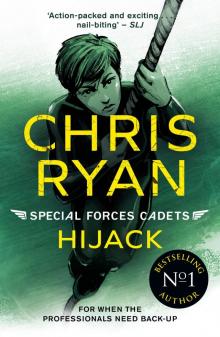 Hijack
Hijack Special Forces Cadets 2
Special Forces Cadets 2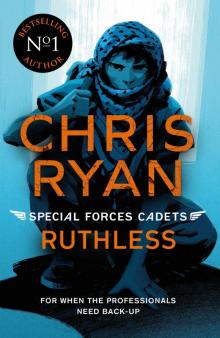 Ruthless
Ruthless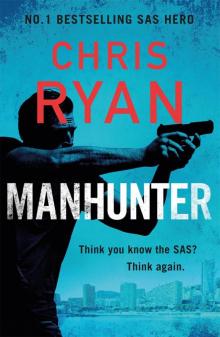 Manhunter
Manhunter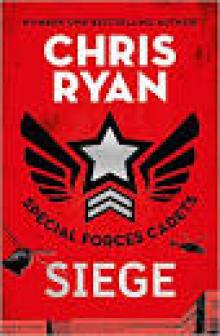 Special Forces Cadets 1
Special Forces Cadets 1 Red Strike
Red Strike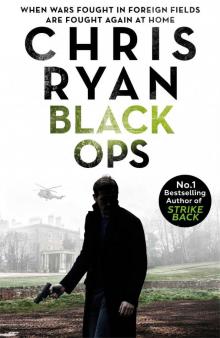 Black Ops
Black Ops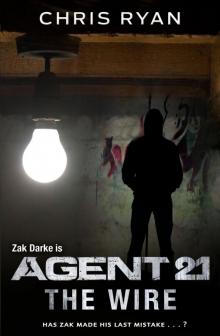 Agent 21: The Wire
Agent 21: The Wire Land of Fire
Land of Fire Alpha Force: Fault Line
Alpha Force: Fault Line Under Cover (Agent 21)
Under Cover (Agent 21)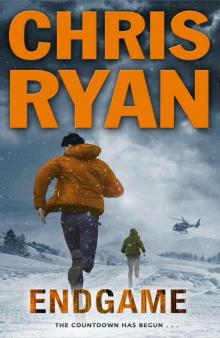 Endgame (Agent 21)
Endgame (Agent 21) Red Centre
Red Centre Blackout
Blackout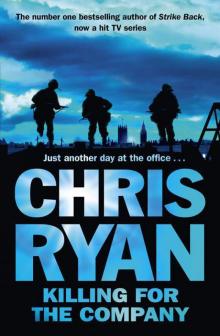 Killing for the Company
Killing for the Company The Watchman
The Watchman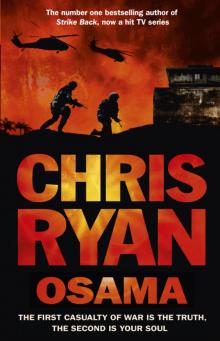 Osama
Osama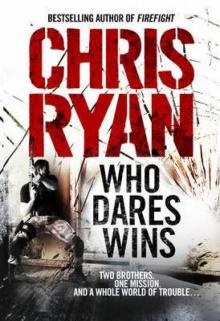 Who Dares Wins
Who Dares Wins The Kremlin Device
The Kremlin Device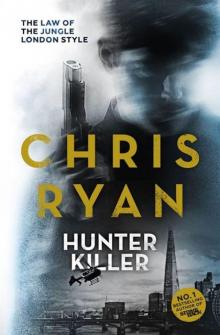 Hunter Killer
Hunter Killer Alpha Force: Untouchable
Alpha Force: Untouchable Stand By Stand By
Stand By Stand By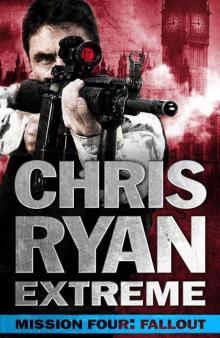 Chris Ryan Extreme: Hard Target: Mission Four: Fallout
Chris Ryan Extreme: Hard Target: Mission Four: Fallout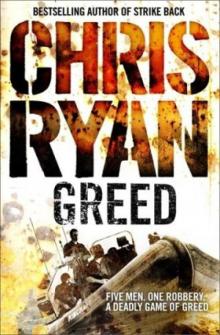 Greed mb-1
Greed mb-1 Alpha Force: Desert Pursuit
Alpha Force: Desert Pursuit Strike Back
Strike Back Greed
Greed The Bay Bulls Standoff
The Bay Bulls Standoff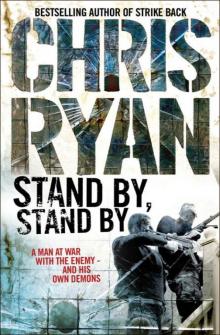 Stand By, Stand By gs-1
Stand By, Stand By gs-1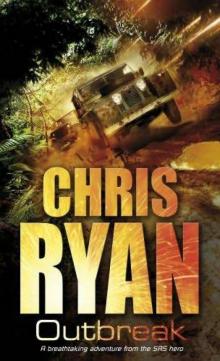 Outbreak
Outbreak Hunted
Hunted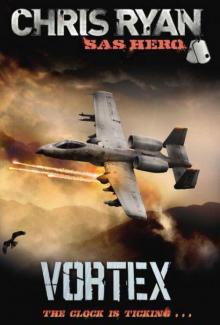 Vortex cr-4
Vortex cr-4 Rat-Catcher
Rat-Catcher Vortex
Vortex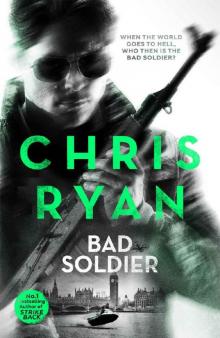 Bad Soldier
Bad Soldier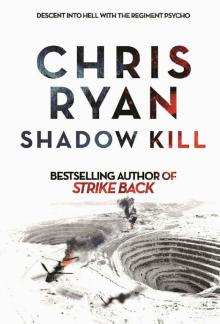 Shadow Kill: A Strikeback Novel
Shadow Kill: A Strikeback Novel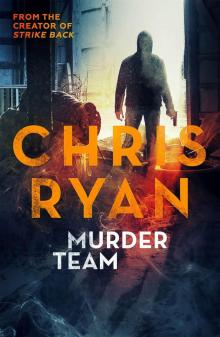 Murder Team (Kindle Single)
Murder Team (Kindle Single) One Good Turn
One Good Turn Flash Flood cr-1
Flash Flood cr-1 Night Strike
Night Strike Wildfire
Wildfire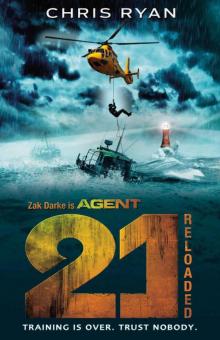 Agent 21: Reloaded: Book 2
Agent 21: Reloaded: Book 2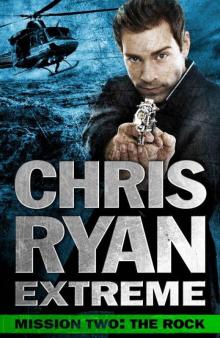 Chris Ryan Extreme: Hard Target: Mission Two: The Rock
Chris Ryan Extreme: Hard Target: Mission Two: The Rock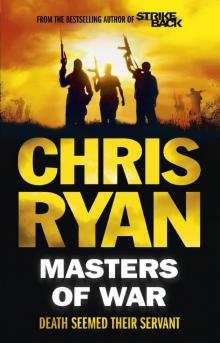 Masters of War
Masters of War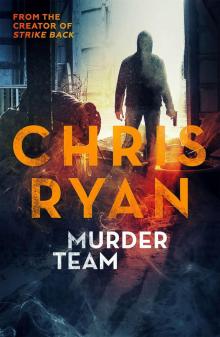 Murder Team
Murder Team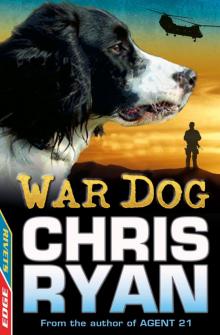 War Dog
War Dog Wildfire cr-2
Wildfire cr-2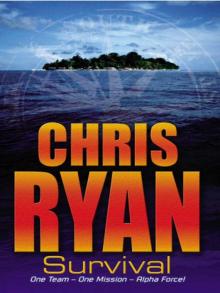 Survival
Survival The One That Got Away - Junior edition
The One That Got Away - Junior edition The Hit List
The Hit List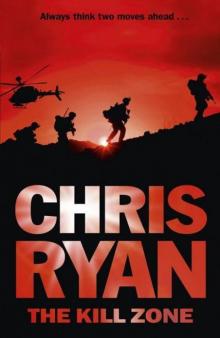 The Kill Zone
The Kill Zone Medal of Honor
Medal of Honor Battleground
Battleground Twister
Twister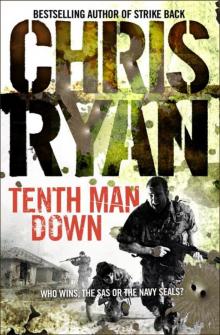 Tenth Man Down gs-4
Tenth Man Down gs-4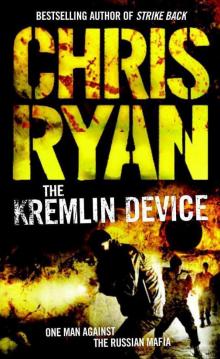 The Kremlin Device gs-3
The Kremlin Device gs-3 Hostage
Hostage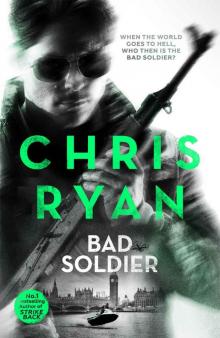 Bad Soldier: Danny Black Thriller 4
Bad Soldier: Danny Black Thriller 4 Alpha Force: Blood Money
Alpha Force: Blood Money Firefight
Firefight Chris Ryan Extreme: Hard Target: Mission One: Redeemer
Chris Ryan Extreme: Hard Target: Mission One: Redeemer Hit List
Hit List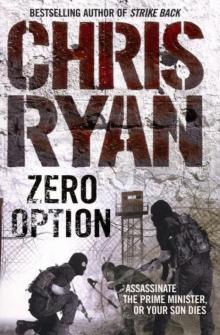 Zero Option gs-2
Zero Option gs-2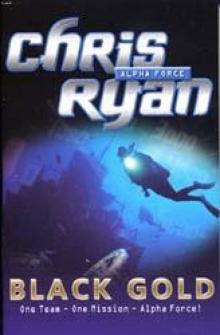 Black Gold
Black Gold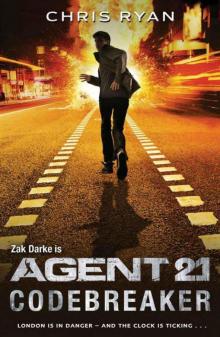 Agent 21: Codebreaker: Book 3
Agent 21: Codebreaker: Book 3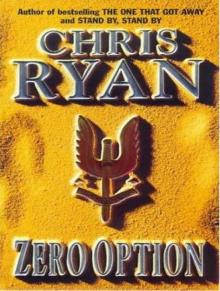 Zero Option
Zero Option Ultimate Weapon
Ultimate Weapon Tenth Man Down
Tenth Man Down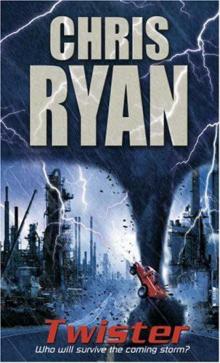 Twister cr-5
Twister cr-5 Deathlist
Deathlist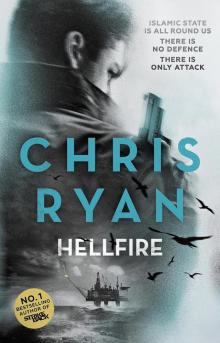 Hellfire
Hellfire Flash Flood
Flash Flood Battleground cr-6
Battleground cr-6 The Increment
The Increment